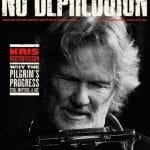The waiting (Letter from New Orleans)
At a benefit to raise money to buy Christmas presents for patients in New Orleans’ Children’s Hospital, Cowboy Mouth’s Fred LeBlanc said we couldn’t wait for people to rebuild our city for us, that we had to pull ourselves up by our bootstraps. That message, delivered in LeBlanc’s Southern Baptist-via-Southern Comfort manner, sounded great, but New Orleans is discovering the limits of a can-do spirit.
Rebuilding is stalled because FEMA hasn’t drawn a new flood map and doesn’t expect to have one until summer. That map designates the floodplain and specifies how high homeowners have to build to be safe. Those who don’t build at that height won’t qualify for the National Flood Insurance Program, which makes building right now extremely risky. As a result, many families who want to return can’t.
So we wait. We wait in lines patiently, and when the waiting gets tiresome, we find things to do. One guy weary of waiting a half-hour for fast food in the drive-thru lane fished a quart of oil from the trunk and topped up. We gesture each other through four-way stops, and anecdotal evidence suggests a similar civic consciousness took place immediately after the hurricane. There are countless stories like the one of Michael Knight, a mechanic in the Lower Ninth Ward who worked almost three days straight in his boat, rescuing over 400 people from rooftops and treetops.
That same civility is not coming from Washington, D.C. Through November and the first half of December, the federal government was so silent that many here feared we’d been abandoned. The news had broken that the U.S. Army Corps of Engineers had not built the levees to the required specifications, which means the flooding was not a natural disaster but a man-made one, as shortcuts left the levees more vulnerable than anyone knew.
No one at the federal level promised money for the rebuilding project. No one said anything, which led a conspiracy-minded town at the best of times to think someone has it in for us. A friend involved in state politics thinks any conspiracy is probably accidental, with politicians and bureaucrats independently making decisions for small-minded reasons — incompetence, ambition, ideology — that unintentionally coincide to jeopardize rebuilding.
Ideology seemed like a motivating factor when Louisiana governor Kathleen Blanco and New Orleans mayor Ray Nagin appeared before the House Select Committee on Hurricane Katrina on December 15. Congressmen — particularly Republican congressmen — tried to deflect attention from the FEMA head Michael Brown and failed levees by focusing on Blanco and Nagin’s response to the hurricane.
Christopher Shays (R-Connecticut) pointed to the city’s plan for evacuation 72 hours before a hurricane and said evacuation “should have been mandatory and it should have been sooner. The fact that you don’t recognize that is troubling.” But 72 hours before landfall, Katrina was on a projected track toward the Florida panhandle.
Steve Buyer (R-Indiana) charged that Blanco’s request for President Bush to bring Louisiana National Guardsmen home from Iraq to do the work they were trained for was “more about politics than actual need.”
Henry Bonilla (R-Texas) said, “There is a lot of Katrina fatigue in the heartland.” Well, there’s a lot of Katrina fatigue here, too.
Once the feds proposed $3 billion for levee repair, Sen. Ted Stevens (R-Alaska) attached a proposal allowing oil drilling in the Arctic National Wildlife Refuge. Stevens’ proposal was stripped from the final bill, but no one in Washington seems interested in extending Louisiana’s boundary to 9 miles offshore, which would bring it in line with Texas and Florida. Currently, Louisiana’s boundary extends only 3 miles offshore; Louisiana congressman David Vitter estimates that extending it to 9 miles would net the state another $500 million to $1 billion in revenue annually from offshore drilling.
Then again, we’re still waiting for mobile homes that were to provide quick, short-term housing. Five months after Katrina, they’re still not here, and many are wondering if the $59,800 to $76,800 that each trailer costs to buy, transport, set up and tear down could be better spent on rents or on rebuilding the homes of those who need the trailers. We also wonder if the Army Corps of Engineers really needs to pay $175 per square foot to put blue tarps on damaged roofs; the job is repeatedly subcontracted until those actually putting the tarps on roofs get closer to $2 per square foot.
Most importantly, we’re waiting to see what the new city will look like. Louisiana representative Richard Baker proposed the creation of the Louisiana Recovery Corporation, a federal agency that would buy flood-damaged houses and pay off mortgages, then sell the land to developers or the city. It would help New Orleans avoid abandoned, blighted properties, while giving homeowners money to rebuild or rebuy.
The White House opposes the plan, arguing that the $6.2 billion in grant money allotted Louisiana is sufficient for the 20,000 homeowners who were uninsured because they lived outside the floodplain and had no reason to fear flooding. Local officials contend that 20,000 is a gross underestimation, that 77,340 homes should qualify, and that 217,000 homes were destroyed because the levees gave way, not because of rain-related flooding. The fate of Baker’s bill was uncertain at press time.
With all this anxiety as a backdrop, the Hot 8 Brass Band led a second line through Uptown on the afternoon of New Year’s Eve. Even as we danced by a house that was missing a wall, things felt normal. The city has always celebrated life in the proximity of death, so much so that it has led some politicians to let moralizing affect their judgment. Has anyone suggested farmers on the Great Plains are wrong to live in tornado country? Will anyone suggest Los Angeles or San Francisco should move when the next major earthquake hits?
New Orleans is life-affirming, and it will be more so when our neighbors are home.
Until then, we wait.




